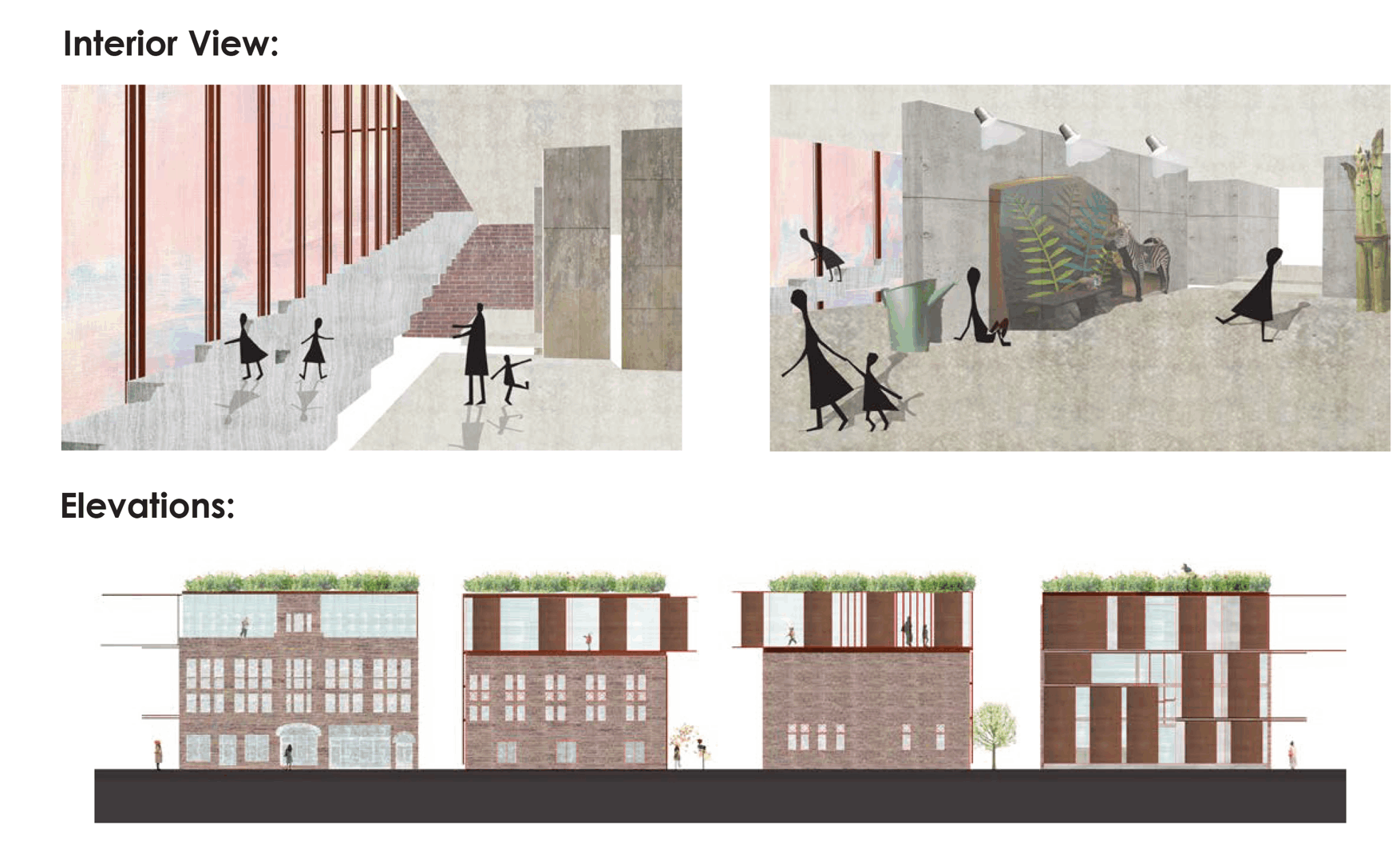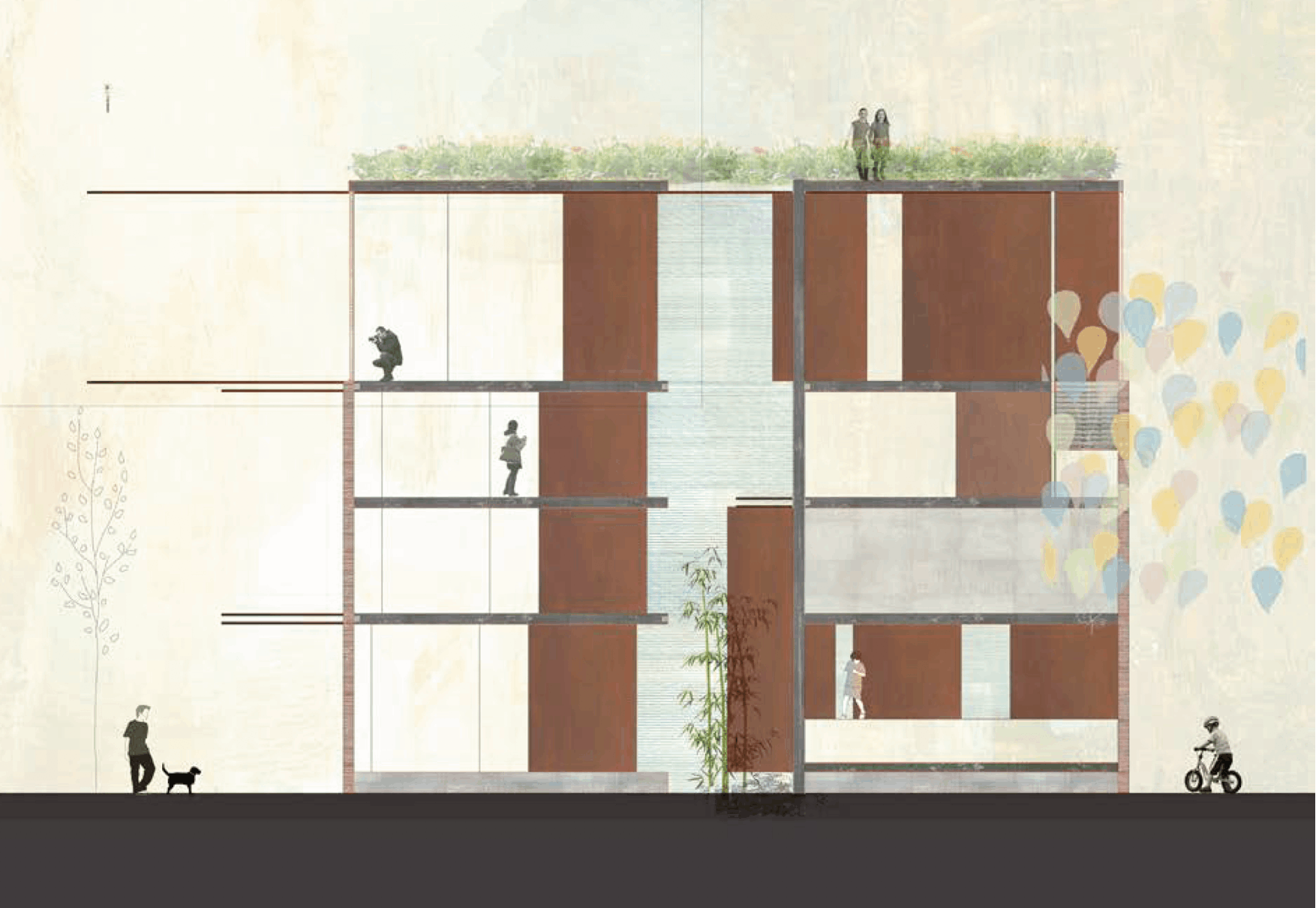
Challenges and Target User
Project Goal and Site Analysis
Pulaski is located in Southwest Virginia in the heart of the New River Valley. It offers the advantage of being close to cultural attractions without the hustle of city life.
After rapid industrial expansion in the 1920s, Pulaski transformed from a busy city into a quiet town, where factory workers needed to find new careers. The traditional mode of life was broken, and the town’s once vibrant atmosphere faded.
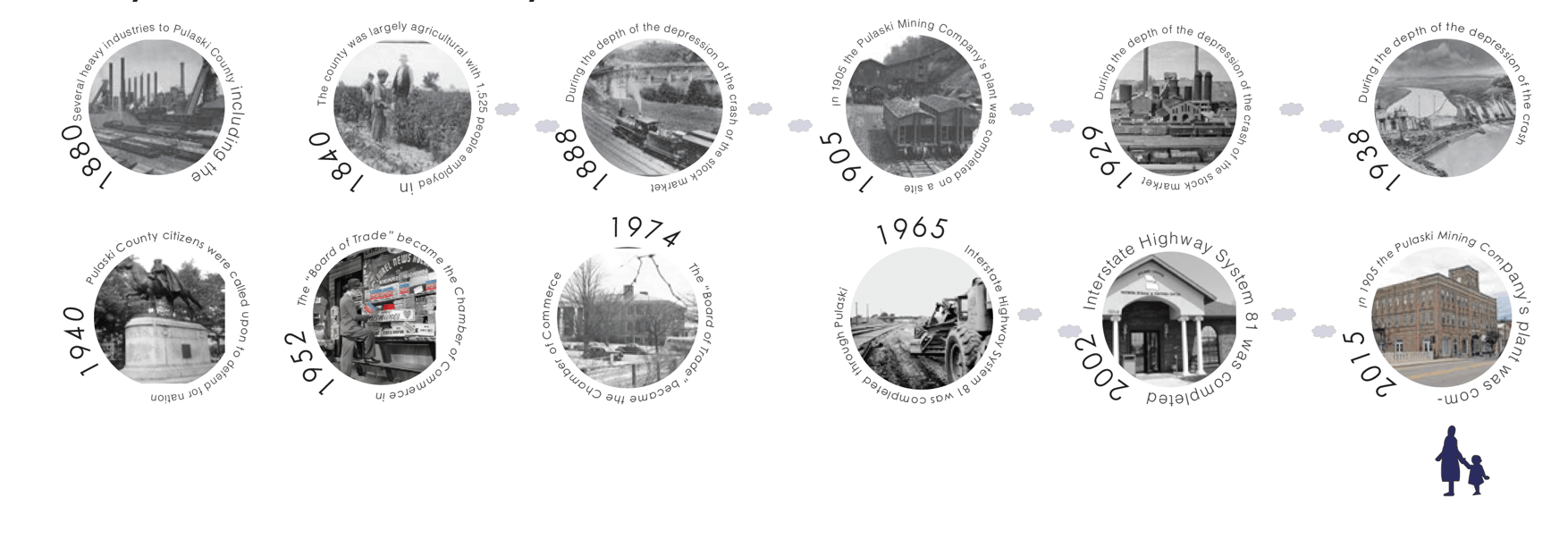
Design Concept
The core of a culture’s history lies in its heritage, which can be visually expressed through its architectural buildings. In our modern society, older generations had to bear witness to the layers of damage done to historic buildings and to the town’s overall heritage. The younger generation is often less aware of the transformations to historical buildings and to the physical changes of their surrounding environments. They often have less chance to understand the culture and history of the place they lived in compared to their parents’ generation.
Through redesigning the Dalton building, I hoped that it could rejuvenate the New River Valley area and its history, and that this project would have great cultural value to the residents living in the periphery. Redesigning the building would bring back new energy, create a spot for social activities, and it would become a stopping place for residents and visitors to reflect on Pulaski’s heritage.
When we see a building with historical traces, each of us will interpret it in a different way. As a designer, to show respect to time is to leave room for the redesigned building to continue to age naturally, to retain its unique characteristics, and to preserve its history. To actualize this goal, I selected specific materials to redesign the building, where I used Cor-Ten steel as one of the primary materials for the building facades. As time passes by, the texture of the steel would naturally fade, and this renovated design would transform organically as part of the new history of the building.
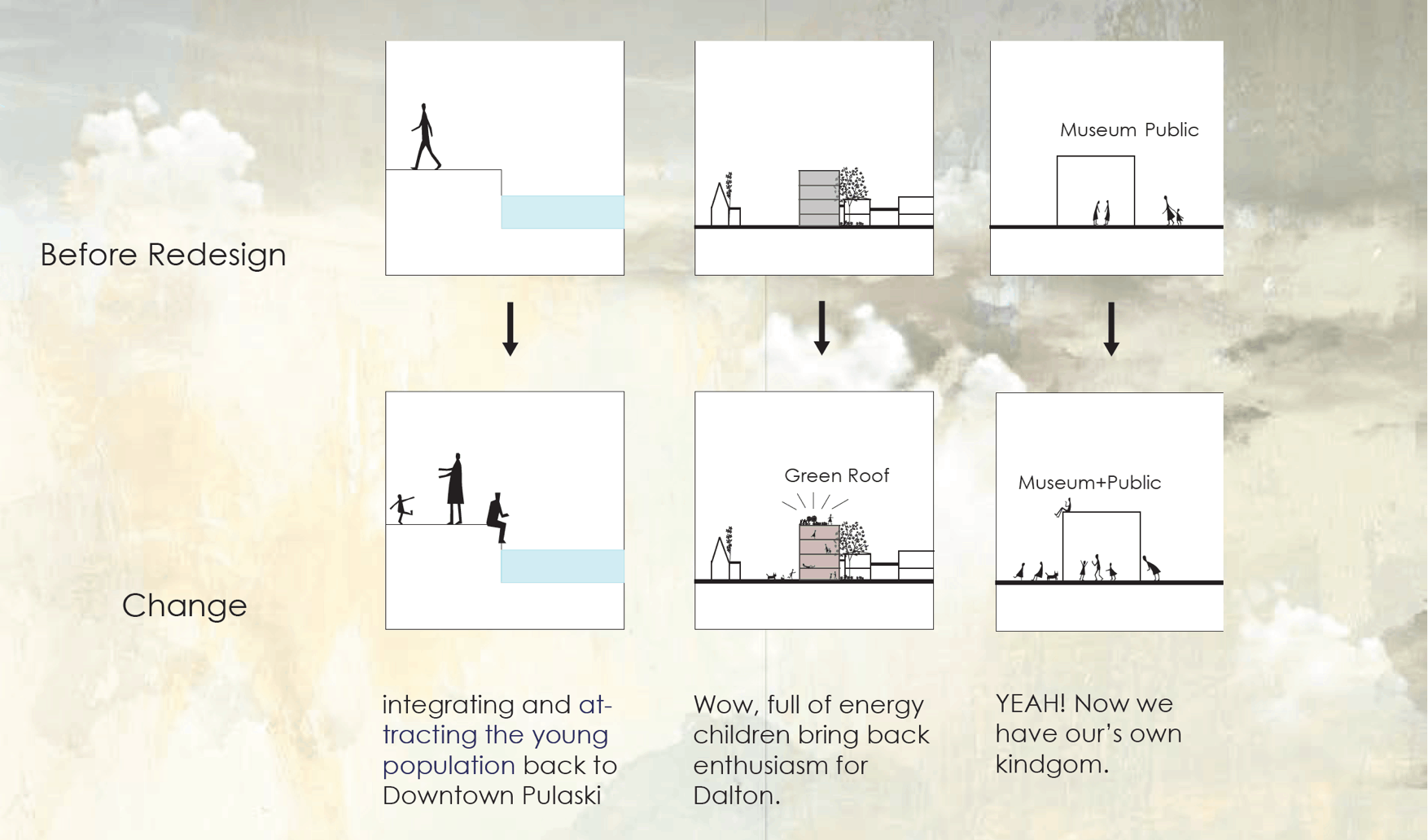
Children’s Activity Center Final Design
Below are the floor plans. I preserved the building's three original facades and transformed the back of the building into another main entrance (East Entrance). Guests enter the main space by following the wooden pathway, where they are greeted by the greenery and cisterns on both sides.
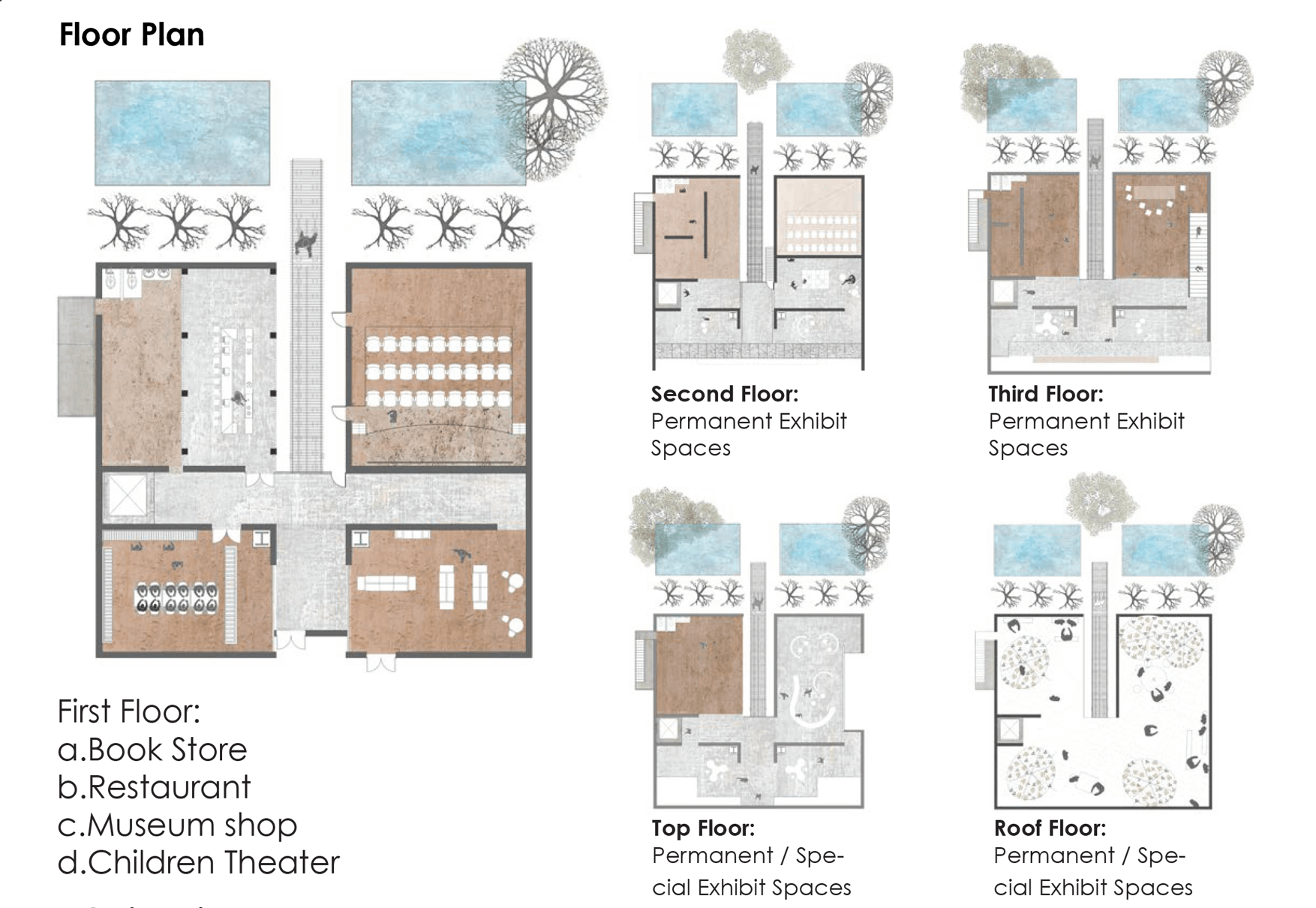
Here are two detailed renderings of the interior view. The first rendering shows the transition space from the second level staircase to the third floor. The second rendering shows the exhibition space next to the stairs.
